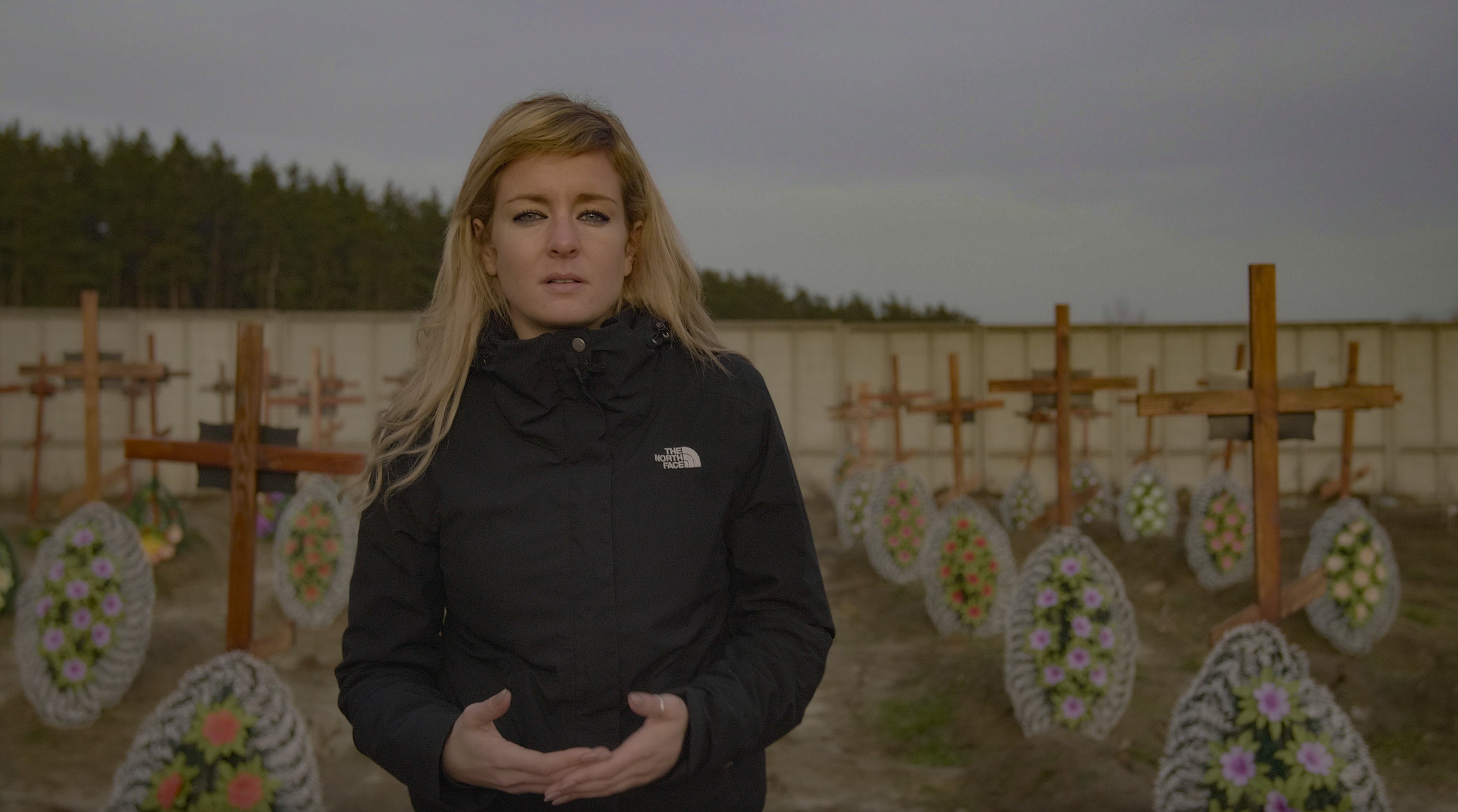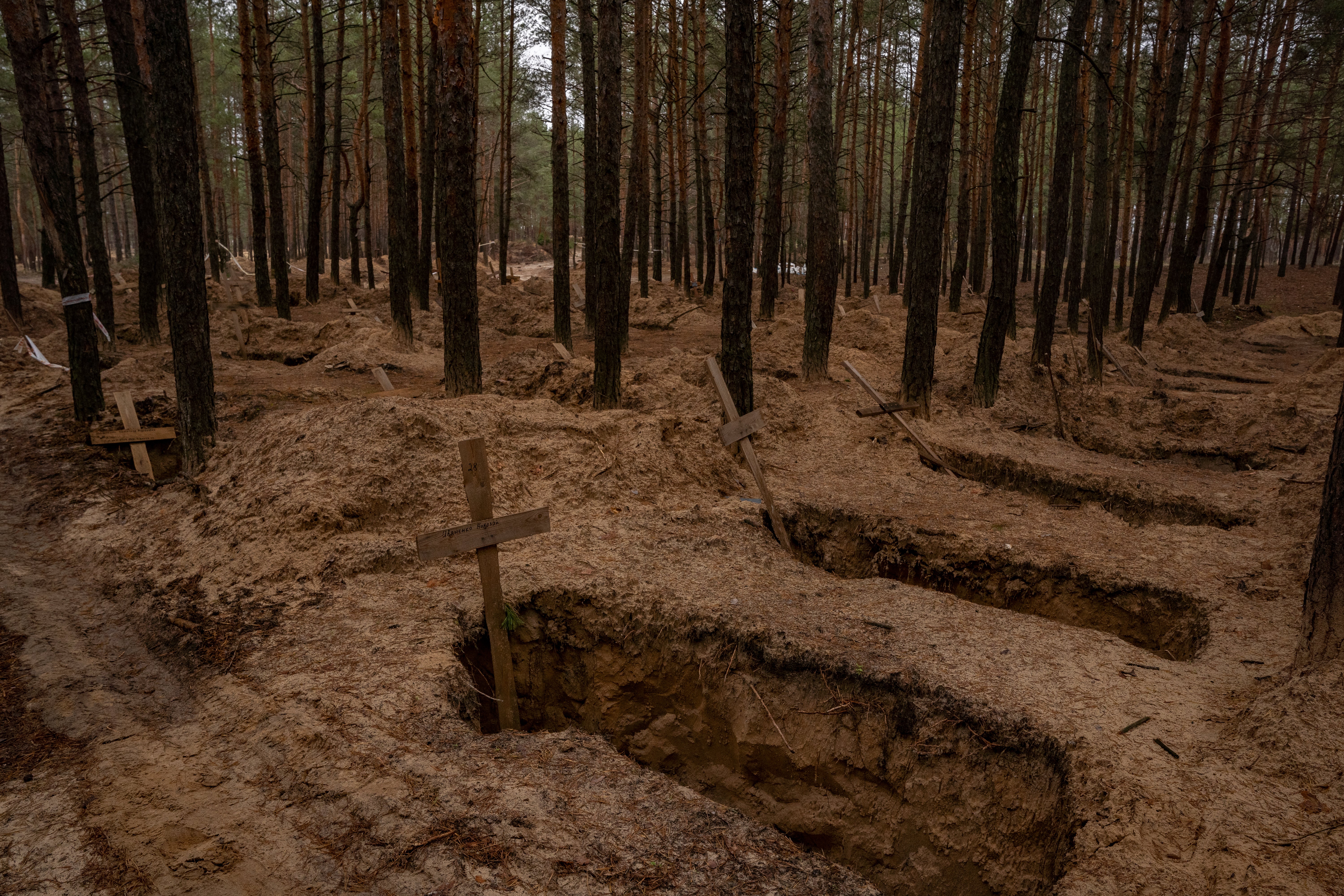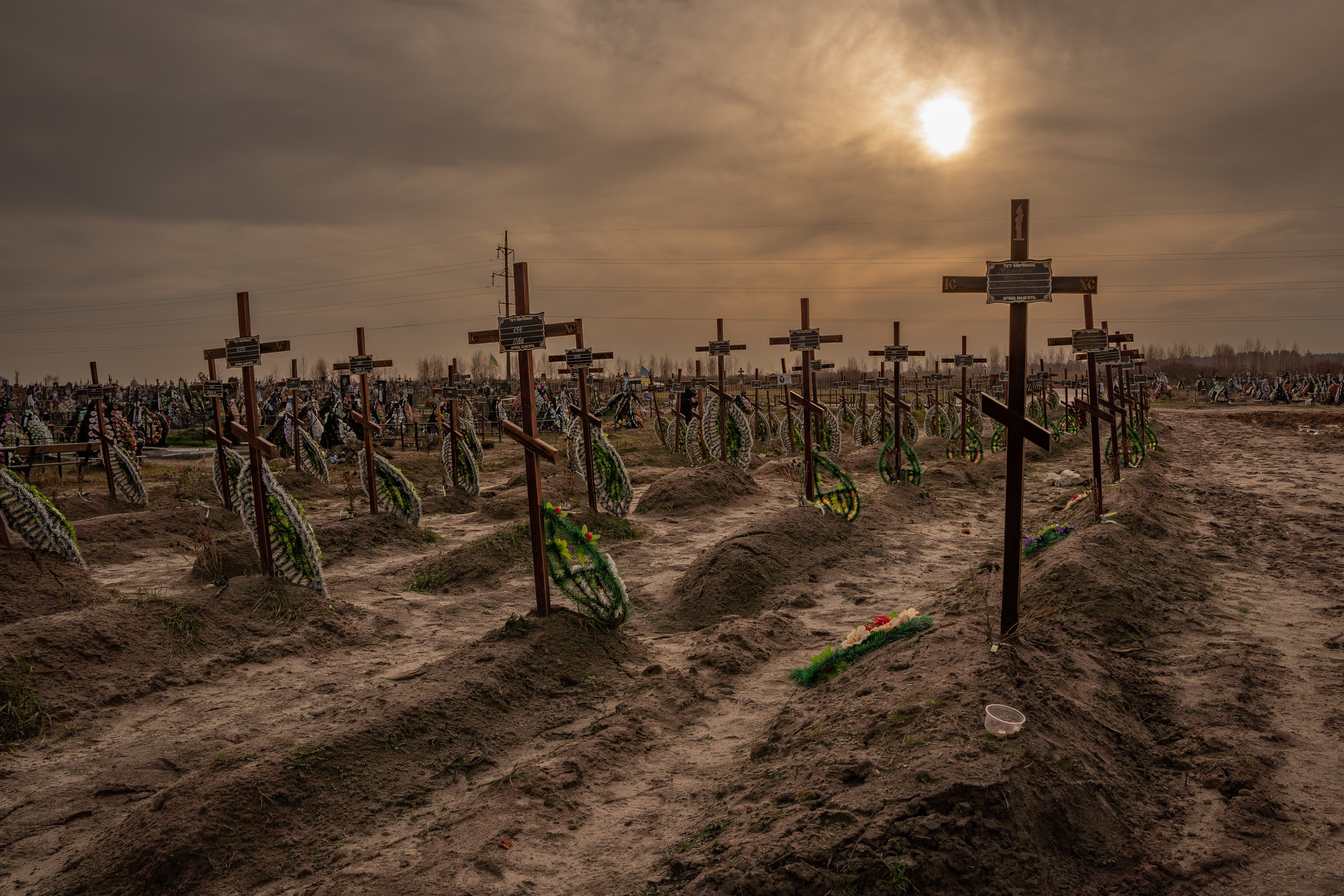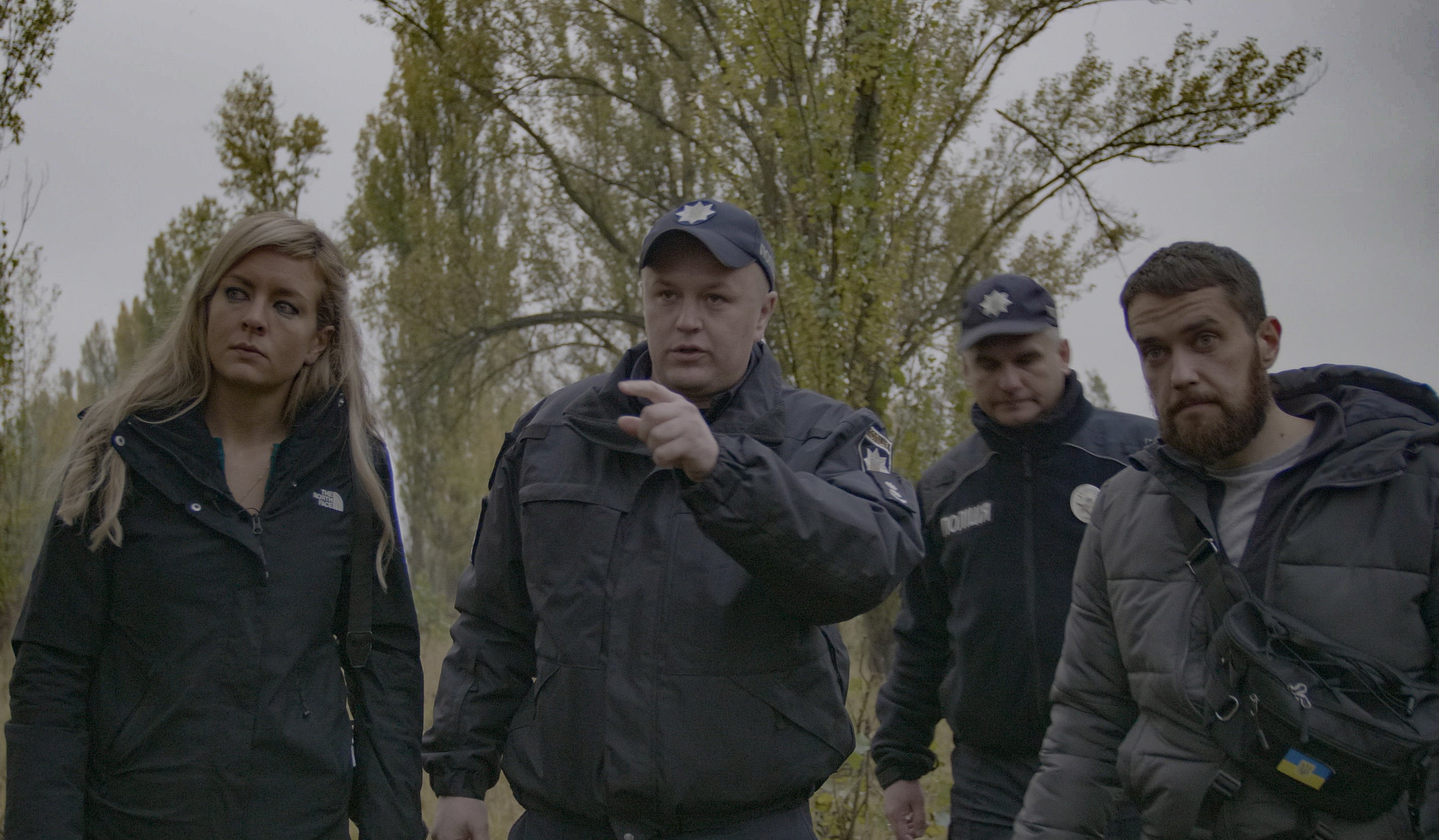The harrowing discovery in Ukraine at the centre of The Independent’s new documentary
International correspondent Bel Trew recalls the moment which led to the making of her new documentary, The Body in the Woods, released on 1 March


There were bodies scattered everywhere. I remember a charred human spine and skull lying on the ground of an upturned burned-out car. Another decapitated body splayed on the ground next to an eviscerated street.
The curve of an arm, and a foot, in a kind of yin and yang shape, appearing through the soil of a mass grave. And everywhere around this was a frozen tableau of horror.
It was the beginning of April, a month into Vladimir Putin's illegal invasion of the country. Russian forces had just withdrawn from towns they occupied in the region west of the capital Kyiv. Without electricity, internet and mobile phone reception, the outside world had had no contact with the residents of these areas. It was the first time we had access since the start of the war. And when Moscow’s men finally pulled back, it felt like stumbling through a lucid nightmare.
Every garden had become a hastily dug makeshift grave. For the first time, first responders were able to dig through the rubble to get to the dead.
You could almost see the ghosts of missing civilians and what they had gone through.

In the middle of that on the way back from a day of reporting we saw a clutch of soldiers in a lonely patch of wood outside of a town called Makariv, 60km west of the capital. They were huddled around something by a scrub of trees.
We got out of the car to check. It was the body of a young Ukrainian man. Face down by a clump of trees, his hands and legs were bound. His body was partially burned. He was barefoot, wearing a plaid shirt and jeans. There was a ring on his right hand.
Just a few metres behind him was an elaborate abandoned Russian camp and network of trenches. It was like they had just left moments ago. Wet socks were still drying on a tree branch. A partially full coffee pot had been left half pressed down by a small towel and wash basin.
There was a sewing station, with buttons scattered everywhere. Next to a coup, chickens pecked through sacks of grain. A small cupboard housed a makeshift kitchen complete with jars of pickles and tins of military food rations.
The next few days were a horrible mess of testimonies of what the Russians had done to the Ukrainian residents of these areas: torture chambers, summary executions, disappearances, and rape. But the image of that young man bound, murdered and dumped all alone next to the frontline Russian trench haunted me. How had he got to be all the way out here? What had happened to him in those last awful days?
Did he have a family? Where were they, was anyone looking for him?

We decided to go back to try to work out if he had ever been identified, if his family had been informed and whether anyone knew what occurred in his last few hours.
What we didn’t realise is that in trying to do this we would enter the nightmarish world so many Ukrainian families are forced into: the unprecedented search for the missing and dead in the middle of Europe’s bloodiest war in generations.
In the chaos of conflict – amid a death toll of this size – with the sheer length of the frontline and the severity of the alleged war crimes being committed, the search to find and identify the dead, to document the war crimes likely committed against them, had become impossibly hard.
Through the course of trying to understand the process, we met Vladislav, a teenager orphaned by the war, whose mum had been killed by Russians but had been given the wrong body to bury.

We met Vadym, a father of two, who was forced to watch his family perish when a Russian plane blew up the apartment building they lived in.
We met countless others with similar stories of loss. They all had the same basic desire: to do the simplest act of all: find and bury their loved ones and secure some form of closure and healing in that.
But nearly a year on they hadn’t been able to do even this.
And so that became “The Body in the Woods” documentary. A little space to tell their stories. To bring into the cold light of the world, the everyday nightmare of the statistics we so glibly read and repeat.
A tiny glimpse into what so many Ukrainians are trying to live every day – what so many families in war are forced to endure.
Watch the trailer of The Body in the Woods

I still think about the young man in the woods often. How lonely and frightening his last few moments must have been. How his murder is another example of the violent pointlessness of Putin’s war in Ukraine, of war in general, of the capacity for certain humans to hurt others.
I fear so much of journalism is the accidental fetishisation of violence. I hope that The Body in The Woods can be a crack in the inevitability of that. And instead, it can front and centre the lives of the people so often swallowed into the statistics. That it can shed a light on the efforts to document these crimes and war crimes.
So that maybe – however naively it sounds – in the future, this won’t happen again.
The Body in the Woods premiered in Kyiv on Saturday and is now streaming onThe Independent’s website and new smart TV app .
To find out more about our new Independent TV smart TV app click here.
Join our commenting forum
Join thought-provoking conversations, follow other Independent readers and see their replies
Comments





Bookmark popover
Removed from bookmarks